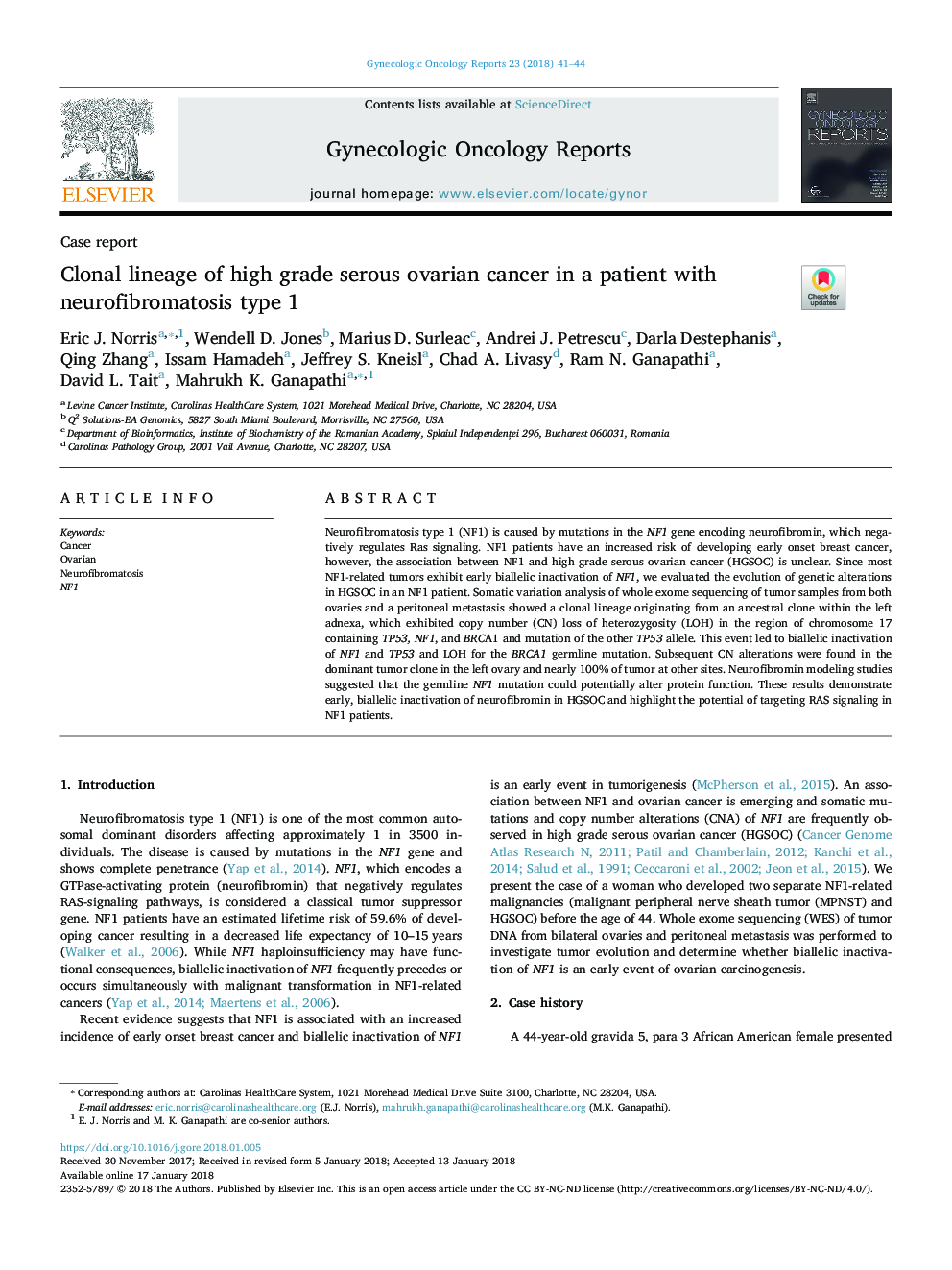| Article ID | Journal | Published Year | Pages | File Type |
|---|---|---|---|---|
| 8781065 | Gynecologic Oncology Reports | 2018 | 4 Pages |
Abstract
Neurofibromatosis type 1 (NF1) is caused by mutations in the NF1 gene encoding neurofibromin, which negatively regulates Ras signaling. NF1 patients have an increased risk of developing early onset breast cancer, however, the association between NF1 and high grade serous ovarian cancer (HGSOC) is unclear. Since most NF1-related tumors exhibit early biallelic inactivation of NF1, we evaluated the evolution of genetic alterations in HGSOC in an NF1 patient. Somatic variation analysis of whole exome sequencing of tumor samples from both ovaries and a peritoneal metastasis showed a clonal lineage originating from an ancestral clone within the left adnexa, which exhibited copy number (CN) loss of heterozygosity (LOH) in the region of chromosome 17 containing TP53, NF1, and BRCA1 and mutation of the other TP53 allele. This event led to biallelic inactivation of NF1 and TP53 and LOH for the BRCA1 germline mutation. Subsequent CN alterations were found in the dominant tumor clone in the left ovary and nearly 100% of tumor at other sites. Neurofibromin modeling studies suggested that the germline NF1 mutation could potentially alter protein function. These results demonstrate early, biallelic inactivation of neurofibromin in HGSOC and highlight the potential of targeting RAS signaling in NF1 patients.
Keywords
Related Topics
Health Sciences
Medicine and Dentistry
Obstetrics, Gynecology and Women's Health
Authors
Eric J. Norris, Wendell D. Jones, Marius D. Surleac, Andrei J. Petrescu, Darla Destephanis, Qing Zhang, Issam Hamadeh, Jeffrey S. Kneisl, Chad A. Livasy, Ram N. Ganapathi, David L. Tait, Mahrukh K. Ganapathi,
